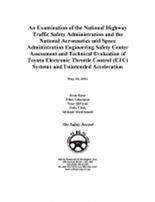FDA News, a purveyor of U. S. Food and Drug Administration regulatory and international standards compliance newsletters, books, special reports and conferences, gathered the medical devices industry to a come-to-Jesus meeting last week and the warnings were stern: quality has been low and the number of U.S. Food and Drug Administration warnings and recalls is high. Medical device manufacturers haven’t met the bar for quality control and the regulations are about to get a whole lot tighter.
Presenters at the three-day conference on risk management and post-market surveillance reeled off a list of unhappy statistics:
Adverse events are growing faster than the market. Infusion pumps, automated external defibrillators and catheters produced 65 percent of the serious adverse events from 2005-2009, according to FDA data.
In 2010, the FDA issued 89 warning letters for Quality Systems deficiencies.
Nearly one-third of all medical device recalls occur as a result of design and/or manufacturing defects and root cause analyses shows that there are wide gaps in product design, manufacturing process control, and supplier management. (The FDA can also require a recall based on a wide variety of non-conformance issues including bad record-keeping, failing to report death and injuries associated with a device and failure to establish a corrective action plan.) Continue reading

